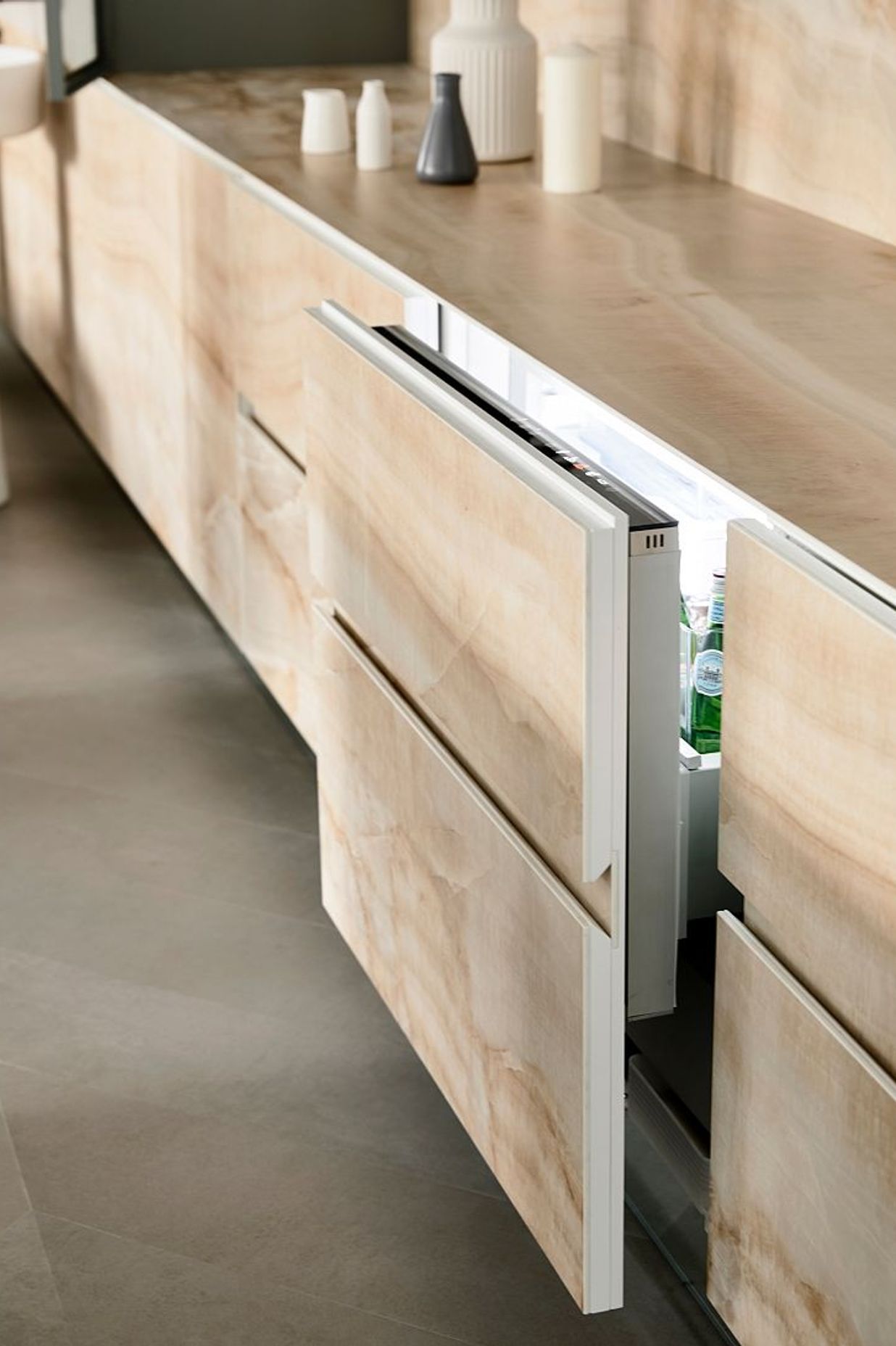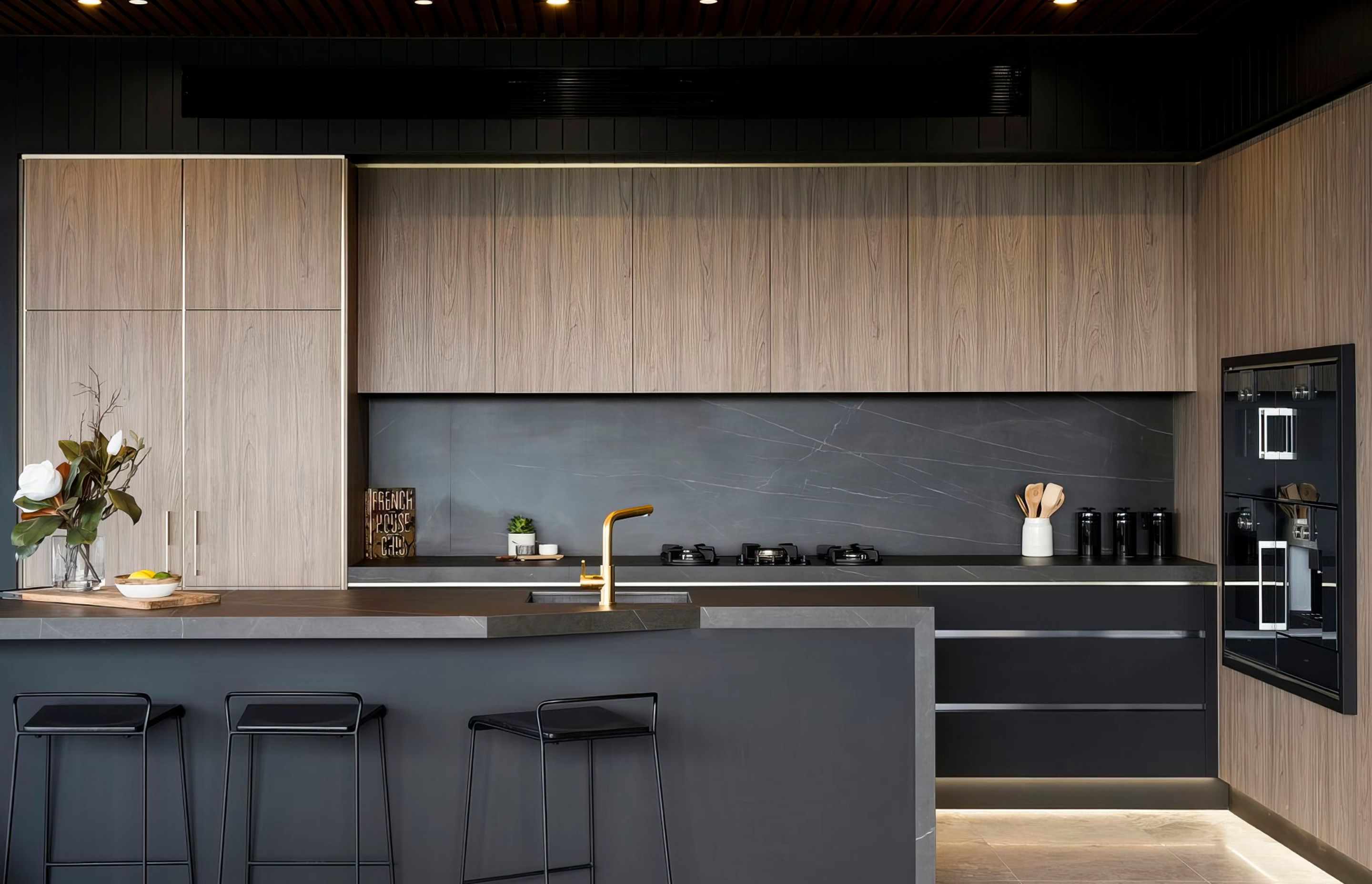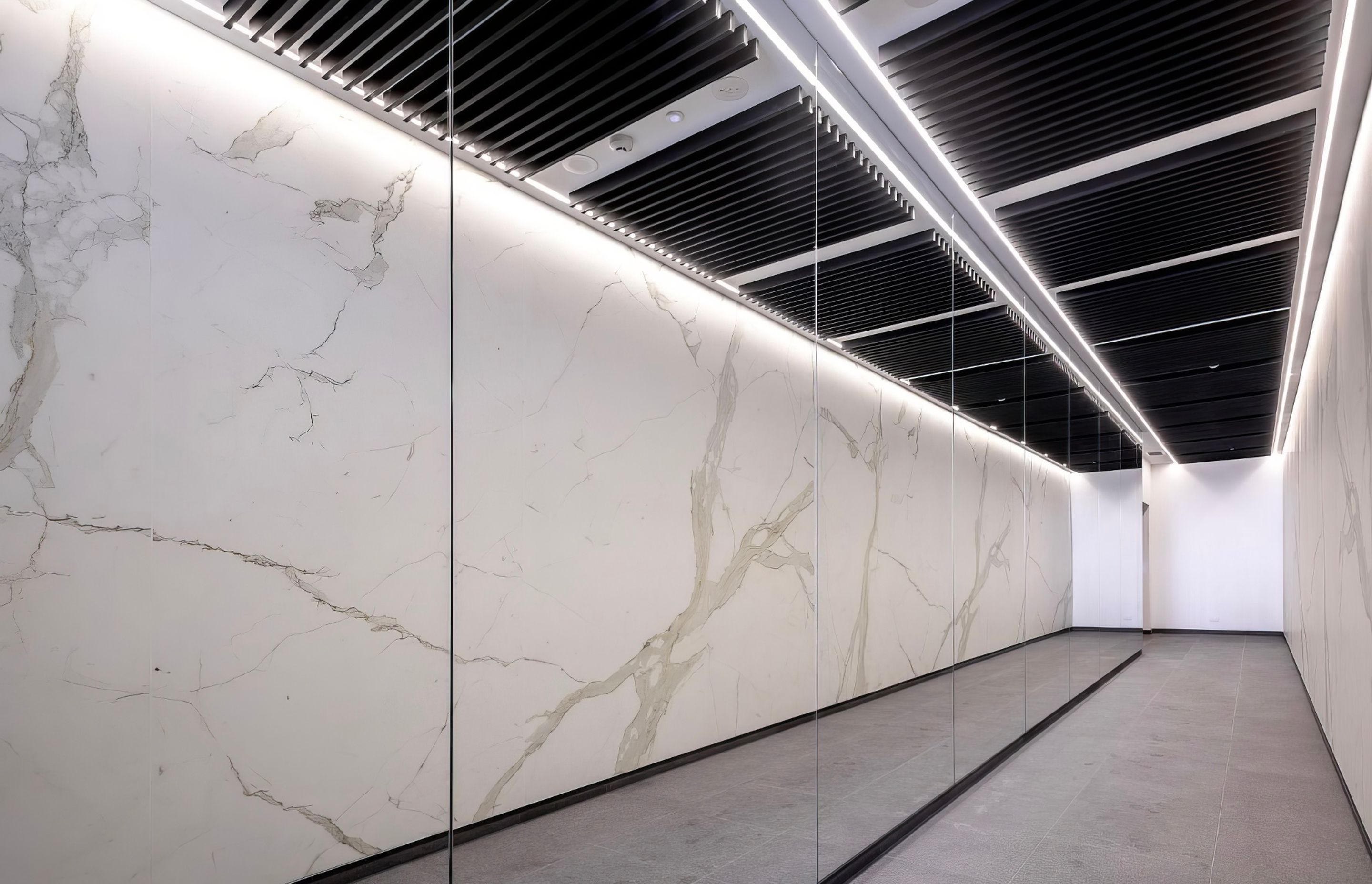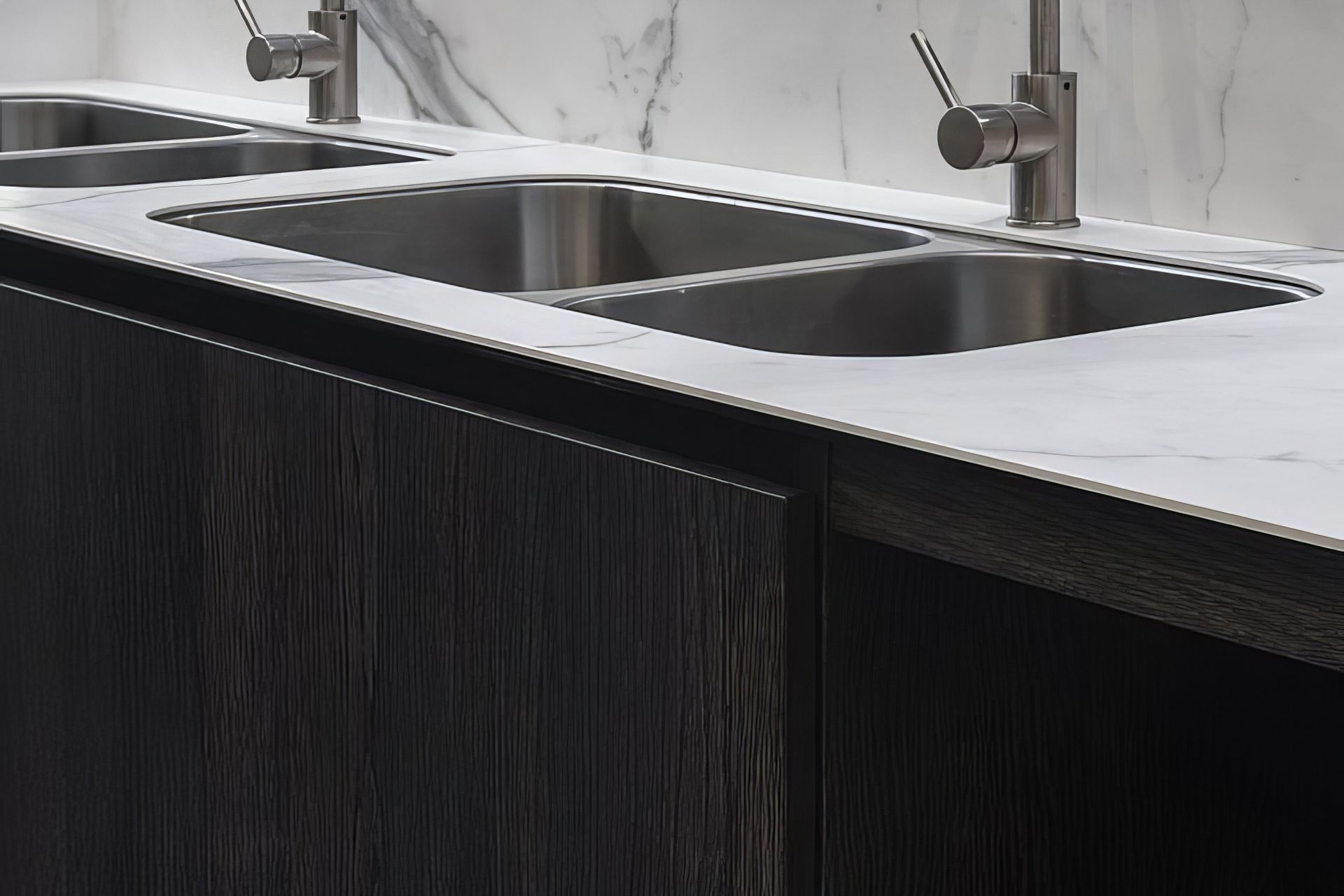The phenomenon is known as Sick Building Syndrome (SBS) and, for unfortunate building occupants, it manifests in symptoms ranging from irritated eyes and skin to headaches and nausea, and more serious conditions.



Products like VOC-free paint and natural floorcoverings have gone some of the way to reducing the prevalence of SBS, but only now has a building product been designed that actively removes air contaminants from indoor spaces. ACTIVE 2.0 is fused to MAXIMUM panels acting in a photocatalytic process removing toxic nitrogen oxides from the air, killing virus particles and bacteria including COVID-19 flu and reducing concentrations of dangerous VOCs, has antibacterial and anti-odour properties, and is self-cleaning.
The only antiviral product on the market
ACTIVE 2.0 is the only product on the market certified* as antiviral. Titanium dioxide in micrometric form is fused to porcelain surfaces at high temperature and pressure, forming a fine skin that can kill different types of viruses. Producing antiviral surfaces requires a fine level of precision because virus particles are smaller than bacteria. As such, inferior products on the market have only antibacterial properties.


These properties make ACTIVE 2.0 an ideal choice for internal, external, floor and wall usage in a variety of commercial projects. ACTIVE 2.0 is of particular benefit in hospitals and medical centres, where it reduces cross contamination, and the antiviral, self-cleaning, anti-odour and antipollution action improves indoor air quality. Active 2.0 provides a non-toxic, easy-to-maintain surface for interiors of offices, hotels and residential buildings, and meets the demand for sustainability and wellbeing in the sector. Its 100-per-cent natural composition is free of toxic resins and chemical binders used in engineered stone, and its aesthetic beauty mimics natural stone, marble, concrete and more.
Unlike the many surface materials that call themselves “antibacterial” but simply stop the spread of bacteria, MAXIMUM ACTIVE 2.0 kills bacteria, including E. Coli and MRSA and also kills viruses including COVID-19. ACTIVE 2.0 test results showed the ability of ACTIVE 2.0 to eliminate 94% of SARS-CoV-2 (responsible for COVID-19) after only 4 hours of exposure to low intensity UV light (natural light and traditional light bulbs even at low intensity). This significant result follows the ISO Certificates (ISO 21702 – ISO 18061) already obtained in respect of four well-known viral strains: the H1N1 and H3N2 Pandemic Influenzas, Enterovirus 71 and the Poliovirus. As well as ISO Certifications in the antibacterial field including antibiotic-resistant bacteria (ISO 27447 – ISO 22196).
Unlike any comparable building material, it does it in all common indoor lighting conditions – in sunlight, under UV light, under LED light, and even in complete darkness. For ISO 22196 compliance, bacteria placed on ACTIVE 2.0 was left in the dark for eight hours. In this time, E. Coli levels were reduced by 99.99% and MRSA levels were reduced by 99.61%. When specified into a building, this mitigates the risk of infection and reduces the need for intensive antibacterial detergents.


Removing toxic nitrogen oxides from the air
Nitric oxide and nitric dioxide (commonly known as NOx) are air pollutants produced by cars, coal-fired power stations and industrial combustion processes. On their own, they can cause respiratory problems, but they’re also highly reactive with other chemicals in the environment, creating an array of dangerous vapours and particles. ACTIVE 2.0 puts the reactive nature of NOx to good use, however, through a photocatalytic process that removes it from the air.
Of course, as with all building products, the manufacture of MAXIMUM itself leads to NOx emissions. But after only two years, each ACTIVE 2.0-coated MAXIMUM panel will have removed an amount of NOx equivalent to that created by its production. From then on, it works purely for the benefit of general air quality.
Reducing concentrations of dangerous VOCs
Not all VOCs are harmful to humans, but three of the worst are found in high concentrations in indoor air. Benzene, released from cars, plastics and resins, is a known human carcinogen. Formaldehyde, which is emitted from paints, adhesives and furniture, and chlorine derivatives, produced by cleaning products, have also been linked to cancer. So removing these from the air should be a priority in every modern building. Again, ACTIVE 2.0 does just that, in a photocatalytic reaction that occurs not just in UV light but under LED lights too. And because it acts as a catalyst in the reactions with these pollutants, the coating is unaffected, so it doesn’t “wear out” over time.
But ACTIVE 2.0 reduces VOC levels in other ways too. Cleaning products are a major source of indoor VOCs and, typically, the more aggressive the detergent, the more VOCs are released into the air. Because water flows across ACTIVE 2.0, rather than beading into droplets, its surface is essentially self-cleaning. As a result, a smaller amount of mild detergent is needed for regular cleaning, which in turn limits the VOCs in the air. This property is also useful when MAXIMUM panels are used on building exteriors, because it reduces the work required to keep them looking their best.
Heavily scented air fresheners are another significant contributor to indoor VOC levels, but with ACTIVE 2.0’s anti-odour properties, again, the need for them is greatly reduced.
Preventing the spread of bacteria
Two of the bacteria most often linked to human illness are E. Coli, a common cause of food poisoning, and MRSA, an antibiotic-resistant bacterium that can cause serious and difficult-to-treat infections throughout the body. Testing has revealed that ACTIVE 2.0 reduces growth of both E. Coli and MRSA by between 99.6% and 99.9%, not only in UV and LED light but in the dark too. This not only mitigates the risk of infection, with all of the trauma that entails, it reduces the need for intensive antibacterial detergents, again limiting the amount of VOCs released into the air.
A unique answer to Sick Building Syndrome
The “healthy building” benefits of ACTIVE 2.0 come on top of the wide range of advantages offered by MAXIMUM porcelain panels, including their 100% natural composition, free of the toxic resins and chemical binders used in engineered stone. And of course, their aesthetic beauty, with colours and markings matched to natural stone, marble, concrete and more. A handful of other products claim to offer similar antipollution and antibacterial performance, but because their coatings are applied as nanoparticles, there are health risks associated with the manufacturing process. This leaves MAXIMUM ACTIVE 2.0 as the singular building product on the market that is a true antidote to Sick Building Syndrome. For business owners, its means less sick leave, greater productivity and greater profitability. And for all of us, it means a greater sense of wellbeing and a healthier life.
Please note, ACTIVE 2.0 is offered as an optional addition to standard MAXIMUM panels or Fiandre tiles and minimum order quantities apply.

